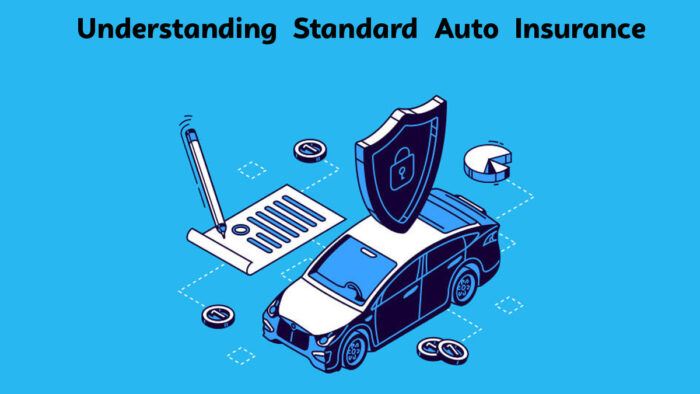Standard auto insurance is a basic auto insurance policy offered to average drivers who are not considered high-risk by traditional insurance companies.

It includes drivers with few or no tickets or claims, good credit, no recent lapses in coverage, and valid licenses. The coverage that drivers need depends on whether their state abides by at-fault or no-fault insurance laws.
To offer drivers standard auto insurance, insurers consider information such as accident history, vehicle type, location, car usage, and driving record.
How Does Standard Auto Insurance Work?
When you are applying for car insurance, you will be put into one of three groups based on your driving experience, history of claims and violations, insurance score, and payment and coverage history:
- Preferred: Have little to no accidents, insurance, excellent diving, and a credit history with the lowest premiums charged.
- Standard: Few blemishes on your credit, driving, or insurance record and not hard to insure
- Nonstandard: As a driver, you should consider this policy if you might not be qualified for most auto insurance policies due to several factors.
Standard auto insurance can be obtained from well-known traditional companies like Allstate, Geico, Nationwide, Progressive, State Farm, and USAA. It’s for people who have good or clean records, no recent coverage gaps, good credit, and valid licenses.
These drivers are referred to as low-risk by insurers, so they often get affordable rates and various options for coverage and deductibles.
If you don’t fall into the standard or preferred category and are turned down by traditional insurers, you might have to go for nonstandard insurance.
This mostly includes teen drivers, senior drivers, or those with less-than-perfect driving records. Nonstandard insurance is offered by specialized companies that cater to higher-risk drivers.
What Does Standard Auto Insurance Not Cover?
Just so you know, your car policy won’t cover certain events. These events include the following:
- Rideshare use
- Vehicle modifications and customization
- Intentional damages
- Lack of car maintenance
Also, it will not cover drivers who are denied coverage by a standard insurance carrier.
Who is Standard Auto Insurance for?
Always keep in mind that all drivers must legally have at least the minimum liability insurance required by their state, based on either at-fault or no-fault insurance laws. If you get pulled over and can’t show proof of insurance, you could face serious penalties or punishment.
For first, second, and further offenses, this may result in your license and registration suspension. You will need to pay fines or fees to reinstate your license, and even jail time. In some states, you might also need to file an SR-22 form.
If you’re leasing or have a car loan, you’ll need to purchase comprehensive and collision coverage to protect the lender’s investment. If you don’t purchase this coverage, your lender might buy force-placed insurance and charge you for it.
And this can be very expensive. It’s advisable to check with your state’s Department of Motor Vehicles (DMV) or a licensed insurance agent to know the minimum liability requirements of your state.
What Are the Benefits of Standard Auto Insurance?
This policy offers you financial protection during a car accident or other covered events by paying the cost of damages and medical bills up to the limit of the applicable coverage.
It works on the concept of indemnity, in which the policyholder is made financially okay again after a huge or small loss.
Also, purchasing auto insurance is mandatory by most state laws. While some states offer additional options to meet the set requirements, such as making a cash deposit with the department of motor vehicles or getting a certificate of self-insurance, a traditional car policy is more effective for an average family.
For instance, Florida will only give certificates of self-insurance to people with a net worth of $40,000 or without debt. And California requires a cash payment of about $35,000.
Standard car insurance is always less expensive, easier to obtain, and more customizable than non-standard car insurance. Therefore, drivers who are considered high-risk should reclassify to have more options available to meet their state’s insurance laws and regulations.
How Much Does Standard Car Insurance Cost?
Just so you know, the premiums that drivers pay vary based on many factors. These factors include, but are not limited to, gender, zip code, marital status, age, vehicle make and model, and driving record.
An insurer’s underwriting process involves comparing the listed information, calculating the probability of policyholders getting into an accident, and filing for claims. The higher the chance of filing a claim, the higher the premiums.
How to Purchase Standard Auto Insurance
You can purchase your policy through licensed insurance companies, agents, or brokers. Most times, insurers offer three ways to purchase a policy: by phone, online, or by going to a local office.
Depending on the insurance you provide, you may be able to apply for a new policy or add coverage through a mobile app.
You may also decide to carry liability limits above your state’s requirements to protect your assets properly. And your choices can be well discussed during the insurance application process.



